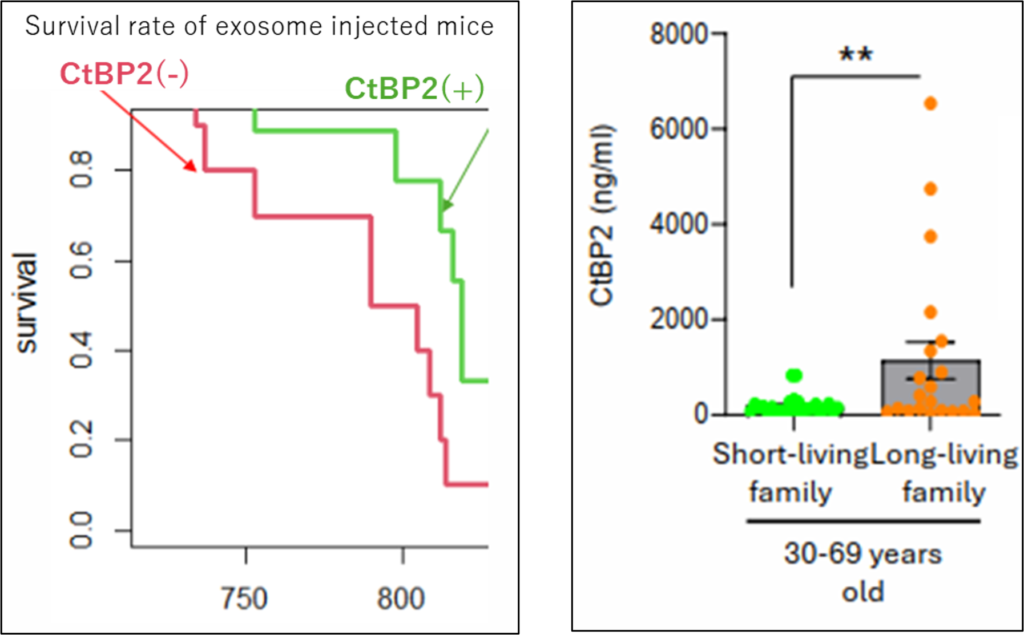Advantages
- Clear Metabolic Activation Mechanism: The mechanism by which CtBP2 recognizes metabolites such as NADH and fatty acyl-CoA has been elucidated.
- Demonstration of Life-Extending Effects in Mouse Models: It has been demonstrated that administering exosomes containing activated CtBP2 bound with NADH to mice significantly extends their lifespan.
- Support for a Potential Human Application: A correlation has been shown where the blood concentration of CtBP2 is significantly higher in long-living families and gradually decreases with age.
Technology Overview & Background
CtBP2 (C-terminal Binding Protein 2) is a metabolite sensor molecule that regulates the expression of metabolism-related genes by sensing intracellular metabolites such as NADH and fatty acyl-CoA. It has been clarified that when CtBP2 associates with fatty acyl-CoA, CtBP2 adopts a monomeric configuration and loses its activity, which results in leberation of its target transcription factors, leading to metabolic dysfunction.
The inventors discovered that through the administration of compounds known to be associated with longevity, such as metformin, CtBP2 associates with NADH, becomes activated, is incorporated into exosomes, and is secreted into the bloodstream. Furthermore, when this exosome-encapsulated active CtBP2 was administered to mice, a lifespan-extending effect was observed. In addition, as a result of measuring CtBP2 concentration in human plasma, it was confirmed that the blood CtBP2 concentration is significantly higher in long-living families and that there is a tendency for it to gradually decrease with age.
Data
- Administering exosomes containing CtBP2 to mice resulted in a significant extension of lifespan.
- It was confirmed that blood CtBP2 concentration is significantly higher in long-living families and tends to gradually decrease with age.
 |
Publication(s)
- Sekiya, M et al., Cell Reports. Vol. 42, Issue 8, 112914 August 29(2023)
DOI: https://doi.org/10.1016/j.celrep.2023.112914 - Sekiya, M et al., Nature Communications. 12:6315 (2021)
DOI: https://doi.org/10.1038/s41467-021-26638-5 - Nature Aging (2025) in press
Patent(s)
JP Patent No. 6894119
Additional pending (unpublished) patents exist.
Principal Investigator & Academic Institution
Motohiro Sekiya (University of Tsukuba)
Expectations
The University of Tsukuba is seeking joint research partners with companies that possess development expertise in exosome medicine for the practical application of therapeutics based on this technology seed, the “CtBP2-loaded exosome.” For the theme of joint research, we envision the University of Tsukuba leading the development of foundational technologies such as the CtBP2 expression system, purification, and association with NADH, while the corporate partner would be responsible for the preparation and encapsulation of the exosomes. Disclosure of unpublished data under a non-disclosure agreement, as well as direct meetings and discussions with the researchers, are also possible.
Project ID:WL-05166a


